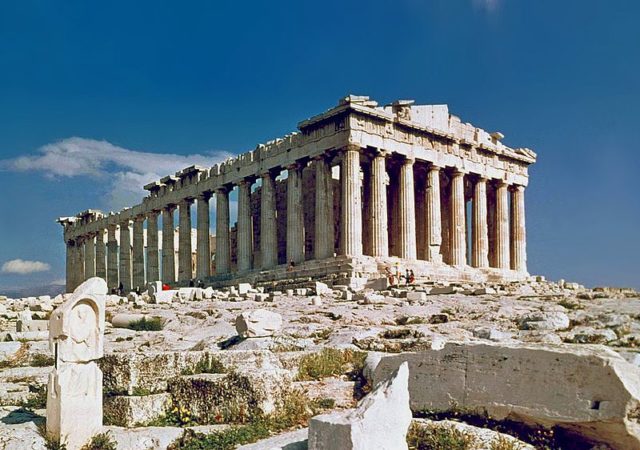Stashing your money in the attic or under the mattress might have been an idea that goes back further than anyone would have guessed. Archaeologists have recreated the attic of the Parthenon in Athens, and say it might have at one time held all of the area’s wealth. They say at its height, it could have held over 260 tons of gold and silver. In the 5th century BC, Athens was a thriving city-state, dominant amongst all Greek cities. It was the largest military power in the region, and supplied protection to its neighbors in exchange for tributes. During that period, its ongoing warfare with Sparta required a lot of money to be easily accessible.

The attic of the Parthenon is now in ruins, and the coins would have been spent in the ancient times. The archaeologists made the finding by reconstructing the magnitude of the attic, looking at the ancient documentation to generalize how ample the reserves might have been, and by re-analyzing archaeological work that was done decades ago. They came to the conclusion that the floor would have covered an area more than three times that of a tennis court, with dimensions of 19 by 50 meters (62 ft wide by 164 ft long), and about 3 m high (10 ft high) at the center. The remnants of a staircase that had once led up to the attic still stand there today. The floor size not only provided enough room for the
The huge size of the room was necessary to hold all of Athens’ great wealth. The coin reserves were thought to have been at their highest about 434 BC, when the Parthenon was devoted to Athena, who was the patron goddess of Athens.
Ancient novelists say the Athenians kept large coin holdings on the Acropolis, but do not state precisely where they are. The coins have become recognized as an Attic Talent, an ancient unit of mass equal to 26 kg, also a portion of worth equal to this sum of pure silver. TThe Greek utilized the ratio of 60 mina to one talent. A Greek mina was about 434 ± 3 grams.

The Ancient Greeks created the idea of the Golden Ratio. This was a formula for creating anything exquisitely pleasing, which has inspired architects and artists much as Dali and Le Corbusier. It is believed that Parthenon within Athens was built between 447 and 438 BC, but several debates the concept was formed after the iconic structure was finished. The structure incorporates various kinds of marble, and limestone, consisting of 13,400 stones transported from Mount Patelakos about 16 kilometers (9 miles) to the Acropolis. It is thought the outstanding temple took merely 15 years to create, and was reconstructed in the year of 490 BC.
One decree that dated to about 433 BC pertains to 3,000 talents being transported to the Acropolis for guardianship, a colossal amount of money. The highest class of coin minted in Athens in that period of time was a silver tetradrachm to create one talent. This translates to 3,000 talents the decree would be valued at 4.5 million tetradrachms, it would have weighed around 78 metric tons, or close to 172,000 pounds. Ancient novelists stated the Athenian savings could; sometimes go up to 10,000 talents. On the assumption that the attic floor was built with thick cypress wood beams, it could have been capable of supporting the weight of the coins. Ancient documents do not reveal the role of the Parthenon’s attic.
